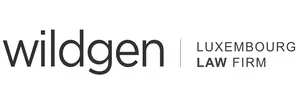The Luxembourg Supervisory Authority for the Financial Sector (Commission de Surveillance du Secteur Financier – the "CSSF") issued on 23 October 2013 its updated "Frequently Ask Questions" on securitisation vehicles ("FAQ") in order clarify its position in relation to the definition of "securitisation special purpose entities" under the law dated 12 July 2013 on alternative investment fund managers (the "AIFM Law").
Although securitisation special purpose entities should in principle fall outside the scope of the AIFM Law, it was not clear which Luxembourg securitisation vehicles were covered by the relevant legal exclusion, as the definition of securitisation vehicles under the Luxembourg law dated 22 March 2004 on securitisation vehicles, as amended (the "Securitisation Law"), is larger than the one of the AIFM Law referring to the definition provided by the European Central Bank Regulation (EC) No 24/2009 dated 19 December 2008.
In that respect, , the CSSF provides in the FAQ more clarity in order to determine which Luxembourg securitisation vehicles could be qualified as alternative investment funds ("AIF") and which are excluded from the scope of the AIFM Law.
Therefore, pursuant to the FAQ, the following criteria should be followed to assess the impact of the AIFM Law on Luxembourg securitisation vehicles in the sense of the Securitisation Law:
- Luxembourg securitisation vehicles primarily acting as "first lenders" and originating new loans should qualify as AIFs and thus should fall under the scope of the AIFM Law, since no asset (and hence no credit risk) is transferred to or purchased by such entity, so that it should not be considered as being engaged in a securitisation transaction;
- Luxembourg securitisation vehicles issuing structured products linked to non-credit related underlying assets (i.e. assets other than credit instruments), where the transfer of risk attached to such assets is only accessory to the principal activity of the entity (i.e. acquisition/transmission of non-credit related underlying assets), should qualify as AIFs and thus should fall under the scope of the AIFM Law;
- Luxembourg securitisation vehicles issuing collateralised loan obligations should not qualify as AIFs under the AIFM Law and should therefore be excluded from the scope of the AIFM Law;
- Luxembourg securitisation vehicles issuing only debt instruments should not qualify as AIFs and thus should fall outside the AIFM Law scope;
- Luxembourg securitisation vehicles not managed in accordance with an investment policy within the meaning of the AIFM Law should not qualify as AIFs and thus should fall outside the AIFM Law scope.
In practice, each Luxembourg securitisation vehicle together with its legal counsels should now reassess whether the securitisation vehicle in question qualifies or not as an AIF under the AIFM Law in light of the FAQ. Even if the CSSF specifies that above mentioned positions are subject to any future evolution/clarification at the European level, this is the right time to conduct such analysis. Our qualified lawyers from the Banking and Finance together with our qualified lawyers from the Investment Funds Practice Groups are pleased to assist you with such analysis. For further information please contact us directly.
The content of this article is intended to provide a general guide to the subject matter. Specialist advice should be sought about your specific circumstances.

